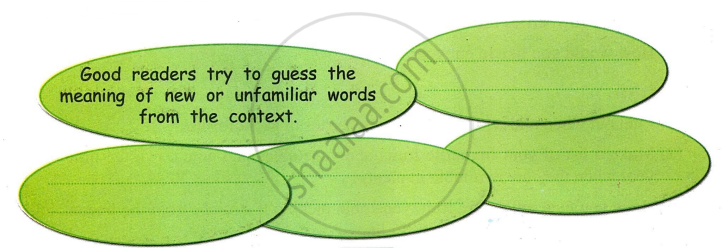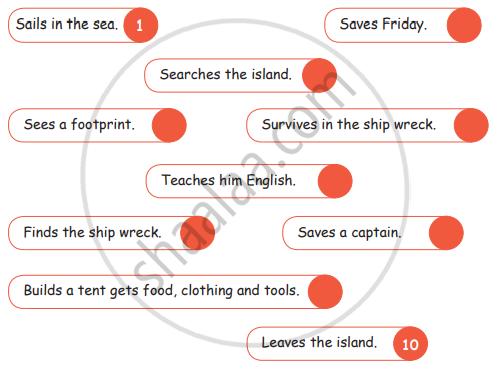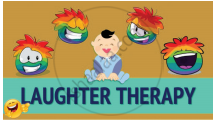Advertisements
Advertisements
Question
Briefly comment on:
The author’s meeting with Norbu.
Solution
The author had almost lost hope and felt absolutely helpless as the town seemed so mundane with no pilgrims or visitors, despite it was the season of Kora. Only the locals were busy carrying their daily activities of playing pool or ladies washing their head in the icy water. It was all very disappointing for the author. Besides, now that Tsetan had also left, he wondered how will he be able to communicate with anyone in English. He was not prepared to complete the Kora on his own. He did not even know if the snow is cleared and had no body to answer him this simple question. The author was sitting in the café when a man walks up to him. Recognising the language in the book he is reading, he asks the author if he was English. The author reckoned that the man was not from the region as he wore a windcheater and metal-rimmed spectacles of a western style. The man told his name was Norbu and he worked in Beijing at the Chinese Academy of Social Sciences, in the Institute of Ethnic Literature. He as well had come to do the Kora. He had been writing academic papers about the Kailash Kora and its importance in various works of Buddhist literature for many years. They both were equally ill-equipped and were ideal companions for the expedition.
APPEARS IN
RELATED QUESTIONS
Answer any four of the following questions in 30 - 40 words each :
(a) What kind of gold did the people of Seemapuri look for in the garbage ? (Lost Spring)
(b) Why did Gandhi tell the court that he was involved in a 'conflict of duties' ?
(c) How do we get joy from life which is otherwise full of sorrows ? (A Thing of Beauty)
(d) For Aunt Jennifer, what do the tigers symbolise ?
(e) What made the chief astrologer place his finger on his nose ? (The Tiger King)
(f) On the seventh day after the American soldier was found by Dr. Sadao two things happened. Why did Hana feel scared of the second ?
Narrate 'The Tale of Melon City' in your own words.
Why does Ruskin feel that reading the work of a good author is a painstaking task?
Notice these expressions in the poem and guess their meaning from the context:
| rancid breath | squelching tar |
| spectroscopic flight of fancy | |
| rearing on the thunderclap | brunette |
| peroxide blonde | clinical assent |
| raven black |
Discuss in pairs or in small groups
'Our daily life reflects a double allegiance to 'the life in time' and 'the life by values'.
“I can see clear bridges between my life experiences and my work in dance.” How does Kumudini Lakhia weave episodes from the two realms in her account?
Go through the poem and state whether the following statement is true or false.
Planners are concerned about the environment of the area.
Answer the following question in short.
How did Tenali Raman outwit Pundit Shahane?
Answer the following question in one sentence.
Why does he ‘miss all the fun’?
Read the following.
- I mean what I say. I say what I mean.
- I see what I eat. I eat what I see.
Use your imagination to write a funny sentence on this pattern.
Read the following and observe the use of tenses.
‘Last week I witnessed a strange accident. Let me tell you about it. The signal flashes green. Vehicles start in the opposite direction. They move fast. Suddenly a speeding motorcyclist tries to cut across, from the wrong side. He is about to collide with a loaded truck. He applies the brakes. He falls and slides out with his bike from under the truck. He comes out unscathed on the other side.’
- When an event, which has occurred in the past, is narrated in the Present Tense to create a dramatic effect its Tense is called the ‘Dramatic Present Tense’.
- Now try to relate Jayant’s sci-fi story, in brief, in the dramatic past tense.
Form groups of 4-5. Read the following sentences aloud. Using your imagination and with the help of group discussion, write other situations in which the sentences can be used.
- The outcome: disappointment and anger.
- The hour of battle had sounded
- What a chase!
- This was our chance, .........
How does the following character in the story live up to their name? Provide points from the story.
Taffimai Metallumai
Rohan and Muk entered the garden at midnight ______.
The poet uses a free, conversational style in his poem. It is also called Colloquial style.
Pick out and write down such lines or expressions that support the above statement.
- ______ you have not done what I asked.
- _______________________.
- _______________________.
- _______________________.
- _______________________.
- _______________________.
Form groups. Discuss how one can be a 'good reader'. Use the points in the above passage in your discussion. Write down the points that show what makes a 'good reader'.

Read the poem and answer the following.
How would you like to eat your strawberries?
In what season does the story take place?
Describe the following with the help of the (The Twelve Months) story.
Summer
List and say whether the following statement agrees with the passage or not.
You should try to talk most of the time whenever there is a discussion.
What is meant by browsing or surfing?
Write a paragraph on ‘The Grumble Family’ and their attitude towards other folks.
What do you infer about speaking with others from this poem?
Mithali’s mother tongue is Telugu.
The robot that sat on her shoulder was a______.
The pigeon flew away for dry twigs.
Arrange the actions of Robinson by numbering from 1 to 10.

What happen to a child who shuts his ears?
What strange things did Alice see?
Now, read the following passage on “Laughter Therapy” and answer the questions that follow.

- Laughing is an excellent way to reduce stress in our lives; it can help you to cope with and survive a stressful life. Laughter provides full-scale support for your muscles and unleashes a rush of stress-busting endorphins. Since our bodies cannot distinguish between real and fake laughter, anything that makes you giggle will have a positive impact.
- Laughter Therapy aims to get people laughing, in groups and individual sessions and can help reduce stress, make people and employees happier and more committed, as well as improve their interpersonal skills. This laughter comes from the body and not the mind.
- Laughter Yoga (Hasya yoga) is a practice involving prolonged voluntary laughter. It aims to get people laughing in groups. It is practiced in the early mornings in open-parks. It has been made popular as an exercise routine developed by Indian physician Madan Kataria, who writes about the practice in his 2002 book ‘Laugh for no reason'. Laughter Yoga is based on the belief that voluntary laughter provides the same physiological as well as psychological benefits as spontaneous laughter.
- Laughter yoga session may start with gentle warm-up techniques which include stretching, chanting, clapping, eye contact and body movements to help break down inhibitions and encourage a sense of playfulness. Moreover, laughter is the best medicine. Breathing exercises are used to prepare the lungs for laughter followed by a series of laughter exercises that combine a method of acting and visualization techniques. Twenty minutes of laughter is sufficient to augment physiological development.
- A handful of small-scale scientific studies have indicated that laughter yoga has some medically beneficial effects, including cardiovascular health and mood. This therapy has proved to be good for depressed patients. This laughter therapy also plays a crucial role in social bonding.
Answer the following.
a. How does laughter help one to cope with stress?
b. Which word in the text (para 2) means the same as ‘dedicated'?
c. Why do you think voluntary laughter provides the same physiological as well as psychological benefits as spontaneous laughter?
d. ‘Laughter is the best medicine’. Explain.
e. Given below is a set of activities. Which of these are followed in the ‘Laughter Yoga’ technique?
- sitting on the ground with legs crossed
- body movements
- clapping
- closed eyes
- breathing exercises
- chanting
- stretching of arms and legs
- bending backwards
- running/jogging
- eye contact
f. ‘Laughter therapy also plays a crucial role in social bonding’. How?
